
Tay Jnr/Digital Vision/Getty Images
muenster cheese is easily recognizable in the dairy case by its familiar orange or red rind. While some other cheeses come wrapped in wax or other inedible casings, muenster's rind is completely edible. Because of differences in the brining and aging processes, however, the flavor of the rind will vary not only by brand, but also by the cheese's country of origin.
European origins
The European version of this cheese is not only spelled differently -- munster -- but it has a very distinct flavor. Originating in France and Germany, munster cheese was created in monasteries as a way for the monks to preserve fresh milk and feed the community they served. European munster is washed in brine and aged in caves until it develops a strong flavor and aroma. It has a white rind that boasts a noticeably salty flavor. In the United States, European munster cheese is most often sold in specialty shops or in stores that carry other gourmet cheeses.
American Muenster
European immigrants began making muenster cheese in Wisconsin in the late 1800s. Over time, however, the recipe began to change. Unlike the traditional European version, American muenster cheese may or may not be washed in brine, and it is aged for a considerably shorter period of time. American muenster cheese has a buttery flavor and a mild aroma, and can be found in almost every grocery store next to the cheddar, jack and mozzarella.
Muenster's Rind
Although American muenster is not aged as long as its European cousin, it is aged just long enough to develop a thin rind. If the cheese has been washed in brine, the rind may be slightly chewier than the inner part of the cheese, and will also taste salty. American muenster is often coated in annatto (a natural vegetable dye) or mild paprika to give it a red-orange color. Although the paprika coating is very light, there may be a slight hint of spice to the rind. Regardless of aesthetic or processing differences, muenster's rind is completely edible, although it is a personal decision whether or not you choose to eat it.
Uses for Muenster Cheese
Mild, creamy American muenster cheese is great on grilled cheese, burgers and other sandwiches. Try mixing shredded muenster with mozzarella on your next homemade pizza -- muenster melts like a dream. In France, the more strongly flavored European munster is traditionally eaten on baked potatoes with finely chopped onions. Both European and American muensters pair well with whole grain bread and a beer.
Related Articles

How to Make Muenster Cheese
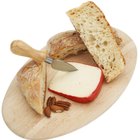
A List of Dutch Cheeses

Cheeses Similar to Feta

Difference Between White Cheddar & ...

Calories in Pimento Cheese

Substitute for Shredded Parmesan Cheese

What Types of Cheeses Are Unpasteurized?
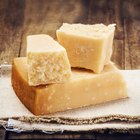
MSG and Parmesan Cheese
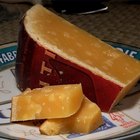
Facts About Gouda Cheese

How to Store Parmigiano Reggiano
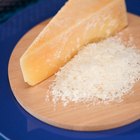
The Differences Between Romano & ...

How to make Stuffed Jalapeno Peppers ...

How to Cook With Havarti Cheese

Sources of Calcium in Indian Food

Different Kinds of Lunch Meat
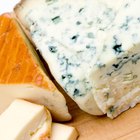
How to Crumble Gorgonzola Cheese

The Difference Between Fresh Cheese & ...
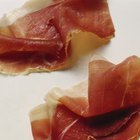
Can I Eat Prosciutto Ham Without ...

The Best Melting Cheeses
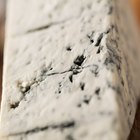
What Good Bacteria Is in Cheese?
References
Writer Bio
Heidi Almond worked in the natural foods industry for more than seven years before becoming a full-time freelancer in 2010. She has been published in "Mother Earth News," "Legacy" magazine and in several local publications in Duluth, Minn. In 2002 Almond graduated cum laude from an environmental liberal arts college with a concentration in writing.
Photo Credits
Tay Jnr/Digital Vision/Getty Images